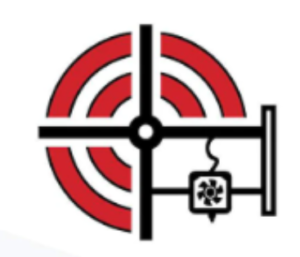We’re starting with standards news from ASTM International in today’s 3D Printing News Briefs, and then moving on to business, as Precision Plastics Australia launched a new collaborative venture. ValCUN introduced an industrial printhead, and LONGER will soon launch a Kickstarter campaign for a desktop UV printer with dual printheads. Finally, we’ll end with news about an interdisciplinary research initiative.
ASTM F42 Committee Developing Standard for Polymer AM Extrusion
ASTM International’s F42 Committee on additive manufacturing is working on a proposed standard (WK81710) that could potentially maximize the strength and quality of parts printed with polymer material extrusion. Relating directly to the United Nations Sustainable Development Goal #12 about responsible consumption and production, the standard would assess inter-layer weld in shear through a proven test. According to ASTM member and composites manufacturing expert Rick Cole, the proposed standard will be able to provide important data that part designers, quality assurance personnel, and manufacturing process developers would find particularly useful.
“It has been shown that the weakest areas of polymer AM parts produced using an extrusion process are formed between layers as material is deposited, also known as the inter-layer weld. The properties of this weld have been found to be difficult to measure repeatably, for example, using tensile tests,” explained Cole, a research officer at the National Research Council of Canada (NRC).
“The good repeatability of the test in this proposed standard will allow users to fine-tune their manufacturing process, including setting printing parameters, to optimize the strength of printed parts. Quality assurance personnel should find the test useful to verify the quality of a printing process on an ongoing basis.
“Increased use of the polymer AM extrusion process described in this proposed standard will help to eliminate the energy and materials required to manufacture tooling needed for traditional processes, such as injection molding. The polymer AM process allows for the production of complex plastic parts without the use of tooling.”
Precision Plastics Australia Launches DesignLab.au Venture
Precision Plastics Australia, one of the country’s largest high-volume production 3D print farms and laser CNC service providers, recently launched a new collaborative venture called DesignLab.au. This creative collaboration platform connects Australian AM expertise, international 3D product designers, and an always expanding network of national retail partners for 3D printed home decor products. Certified as Australian Made and Owned, DesignLab.au is the next step in local innovation, bringing together the designers, retailers, and end customers to develop high-quality, unique products. Taking advantage of Precision Plastics Australia’s advanced production processes, these products are all meant for just-in-time production, which means a more sustainable environmental footprint. DesignLab.au issues an invitation to designers, consumers, and retailers to be part of this new venture.
“DesignLab.au was built on a simple idea — that world-class design doesn’t have to be manufactured overseas. By combining global creative talent with our advanced local production and retailer network, we’re proving that innovation, sustainability, and style can thrive together — right here at home in Australia,” said Dr. Craig Morrison, Founder of Precision Plastics and DesignLab.au.
“We’re incredibly proud to support the world’s next generation of designers, while giving local retailers access to exclusive, locally produced homeware collections that customers love. DesignLab.au isn’t just about products — it’s about reshaping how design and scalable just-in-time 3D production work together for a more creative, connected future.”
ValCUN Announces REMUS 1.0 Industrial Printhead for Aluminum
Belgium-based molten metal deposition (MMD) company ValCUN is working to get the industry to appreciate the full potential of aluminum alloys, with their excellent thermal performance, strength-to-weight ratio, and more. That’s why it’s launched REMUS 1.0, a next-generation industrial printhead for aluminum production on the factory floor. It’s built to deliver on throughput, reliability, and deployability, and serve multiple industries. For custom-tailored manufacturing setups, the REMUS 1.0 can be integrated onto CNC machines, robotic systems, and the company’s MINERVA 3D printer. Plus, by operating independently from a build plate and part dimension, the printhead makes it possible to achieve direct printing on existing parts or surfaces, which expands the capabilities of ValCUN’s patented MMD, and is a big step toward deployable, industrial-scale aluminum AM. The new REMUS 1.0 will be debuted publicly for the first time at next week’s Formnext 2025.
“REMUS 1.0 is the tool to truly industrialize MMD. MINERVA allowed us to refine the process and understand the industry’s needs — REMUS is born out of that learning, translating those insights into an industrial product,” said Jonas Galle, Co-Founder and CEO of ValCUN.
LONGER Launching Kickstarter for Personal UV Printer with Dual Printheads
Well-known already for its resin 3D printers, Chinese manufacturer LONGER will soon launch a Kickstarter campaign for ePrint, which it claims is the world’s first desktop UV printer with dual printheads for 3D textures. With its dual printhead system, the company says the ePrint increases print speed by 6X, makes it easy to switch between rigid and flexible inks, and can deliver 60mm embossing for great textured effects. Its aluminum print platform has a black light-absorbing surface for better color accuracy and minimized reflection interference, and there’s open compatibility for third-party inks. Te Longer ePrint support printing on over 300 materials, like ceramics, acrylic, PVC, ABS, metals, and glass, and offers a flatbed mode, rotary mode, transfer film mode, and conveyor belt printing. Additional features include self-cleaning, error prevention, and real-time monitoring. LONGER says that it’s “neither 3D printing nor CNC engraving. It’s TRUE 3D-textured UV printing.”
“LONGER ePrint seamlessly combines industrial-grade inkjet technology with desktop convenience, elevating personal creativity to a new level. Whether for designers, crafters, creative brands, or educational institutions, it delivers unprecedented precision and efficiency. More than just a printer, the Longer ePrint is a creative engine that brings imagination to life,” the company wrote in a blog post.
UT Knoxville’s CHAMP Ready for Construction Researchers

One of the robotic arms that’s part of the Concrete Hybrid Autonomous Manufacturing Platform (CHAMPS) at the University of Tennessee, Knoxville.
In 2023, the University of Tennessee, Knoxville launched its interdisciplinary Future of Construction Initiative (FCi), which is focused on research in functionalized construction—using sensors, energy storage, and other specialized materials to elevate buildings past the basic structure. Now, the first major milestone in this initiative is ready to welcome researchers: CHAMP, the Concrete Hybrid Autonomous Manufacturing Platform, located in a small, retrofitted outbuilding at UT’s Tickle College of Engineering. CHAMP has two giant robotic arms, which can pivot and swivel along several joints; one features a nozzle for concrete 3D printing, while the other is for tasks like precise sensor implantation, and even video recording. The university’s Office of Research, Innovation, and Economic Development (ORIED), Department of Civil and Environmental Engineering (CEE), industrial collaborators, and federal agencies, including the U.S. Department of Energy, worked to secure the two robot arms, as well as the necessary software and training. Eleven faculty research projects have already signed up to use CHAMP, including one using AI to predict the best movements the robot arms should execute for a particular build, and another investigating how low-carbon, biologically based, and recycled concrete can be made suitable for additive construction.
“CHAMP will dramatically accelerate multidisciplinary research in construction,” said Nick Zhou, FCI leadership and an associate professor in the CEE department. “Instead of having engineers, architects, and computer scientists working separately, CHAMP acts as an open ‘playground’ where experts in different fields can test and refine ideas together, fostering breakthroughs no single field could achieve alone.”
Subscribe to Our Email Newsletter
Stay up-to-date on all the latest news from the 3D printing industry and receive information and offers from third party vendors.








